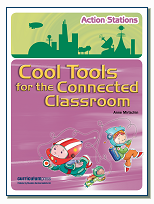These are my notes from the first session of Hack Education on the day prior to the official start of ISTE 2017. Hacked is great, organised by Steve Hargadon and is a firm favourite of mine as people propose topics for discussions, interested people then form groups around a chosen topic and share conversations, experiences, offer suggestions or ask questions at the organic level. The first session I joined was on the topic of Games in Education, led by Ian Mathews.
Can off the shelf videogames be seen as anything other than distractions to education or can there ever be a contextual use for them? I have my opinions as an Education Researcher, teacher, and tech consultant but I would love to discuss everyone’s experiences, ideas, resources. For further info on me, check twitter @ianrmatt who has started consulting for Nefer Games. Sedis has been launched recently which is promoted as a powerful tool for learning. Feedback to @ryanmakhani
Online games
- Kahoot: (to create a kahoot, or this link for students to play) – interactive multiple choice; can use with google hangouts or skype to play competitively with classrooms across the globe
- Quizziz: can assign for homework, ss can play multiple times, make your own memes or let ss make memes
- Quizlet: vocab review; “Live” version assigns students to a team
- Mystery Location: Connections around the States or world. See Mystery Skype
- Quizzes on Playbuz Studentss are a signed to a team – have to talk to each other to see who has right answer
- Word wall –quiz generator
- Mission US: For Crown or Colony– Interactive way to learn history
Observations:-
- Students like to see themselves climb up the leader board.
- Narratives, objects, behaviours, spaces are all important elements of a good game.
- Paula Nagle gives students a study guide and makes them put in 4 possible answers – hard to get the three non-answers
BreakoutEDU (Escape room in a box.) students work through progression of problems to unlock boxes. Basic concept of coding – each problem solved is given a code and allows you into another box via a key. Different puzzles allow participants to get into the box. In teams students can make up their own breakout edu games. What did we try and what did we not try? Don’t use hint cards unless we have used each other as resources. When cannot open a lock, you know you are wrong but your self confidence is not diminished. Join the fabulous Breakoutedu facebook group for support, ideas/deeper learning.
Physics lesson (shared by Diane Main) where end of year review was series of breakouts
Builds resiliency; a student may get a B on a paper and not care about questions missed, but with a wrong breakout answer students will persevere
“The Room” on IOS and android for similar off-the-shelf games
Essential to have conversations afterwards. Conversation Cards (could be used as rewards) available with questions like “what did you learn about yourself/group”, “what would you add to this game”, “who did a good job with __”, “how could I be a better collaborator” Can have “red herring” clues that must be collected even though they don’t necessarily open the box
Video Games
Older teachers feel uncomfortable as they have not grown up with video games.
Alchemy and Little Alchemy game/app– earth/wind/fire to combine elements to solve probems – what if I do this, or what if I do this? Mess around with it for 20 mins, then do more later. That is what we want them to do with their learning.
“Sit and get mentality” is what traditional schools and some cultures are used to. Mixed cultures – focused on a particular university as that is the best and will provide them with the best employment opportunities.
Steve Isaacs uses good games with free stuff using the platform of STEAM.
Minecraft: Paul Blankenship built “The Nations Project” for his students- a relief map in Minecraft altitude finder tool and maps; played through that country; dig out oceans and fill with water Small groups, each group assigned a country and builds that country in minecraft eg France, China, had to use altitude finder. Students used same scale so teacher gave them the scale. Had to dig out the oceans.
Class Craft similar to class dojo; Students are in clans – implementation of the tool is important thinking of participatory design – like class dojo but more involved as they have to do missions collaboratively. Works really well as teacher can see what their students are doing, However kids don’t see it that way – don’t see the point and just jump the hoops. Implementation of tool is very important. Get kids to help design the parameters. Not make it a motivator.
PeaceMaker – set the task of making peace in the Middle East game
Third-World Farmerv – free online game; strategies to survive as a third-world farmer; there is a cheat site. Do we want them to beat the game or experience the game. How to develop strategies to avoid the cheaters?
“Rogue-like” is term for games that send you back to beginning- getting little ship from one side of the galaxy to the other. 50 hours of play and if you get one thing wrong, you go right back to beginning
Spelunky – trying to teach resilience.
One Chance – reflect on experiences on gameplay experience where students have 10 days to live
Big G – Small G is the media for the game – big G is the big course around play. Conversations that students have around games. Norwegian teacher teaches ethics by playing this.
Walking Dead. Play as a class on big screen. Then study 4 sets of ethical principles and decide which ethics to follow as to how to play the next level. The discourse that surrounds the play. Peace game – discourse where kids go deeper and deeper in their thoughts. Similar to choose your own adventure.
Choose your adventure – decisions, decisions etc
Twinery write your own story
Best learning that happens is social as games are being played
Game playing is risk-taking because some people are afraid of what administrators might think iCivics.org US civics related game
Prodigy maths games are free to schools.
Google just released – Be Internet Awesome– Interland is the game part of it.
Bron Stuckey asked why when singing games, puzzle games, kindy games used all the time in classrooms. Why have we stopped when digital games came.
There is a perception that teachers will get into trouble if found to allow students to play games. Therefore pullback on other games – it is a waste of time, testing is priority
Read Greg Toppo who wrote book Game Believes in You – use Warcraft to get kids to develop avatar.
Matt Farber – Gamify Your Classroom book
Free mobile startup game in development Life is Yellow K-3 addition processes
Goose chase – gamification of learning for the masses – set up things that people have to do whilst at the conference – like a scavenger hunt. Eg 50 points if your whole team jumps in the pool.
Simple quest – uses google forms and tools by Bron Stuckey and Alice Keeler – get gameful to onboard students on to a new topic. Hardest thing is to get students to think playfully the quest for the kids. Eg Who was the 59th president of the USA – make it a playful question.
The Reflection cards – concept of taking a game or activity and kids and administrators see it is fun. Captures entire thing back into pedagogy. Cards on Four Cs – what did you learn out of this activity. What is the question, clue or lock you could use or provide and tie into curriculum. Put cards into boxes rather than candy – have an experience afterwards. As a teacher develop the soft skills.
Lucas Gillispie Nth Carolina: Gamifying teacher professional learning in EPIC Academy

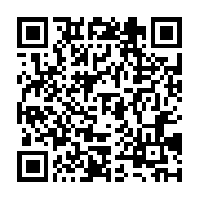






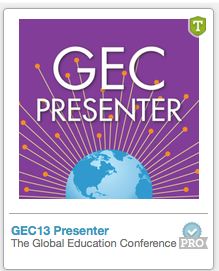
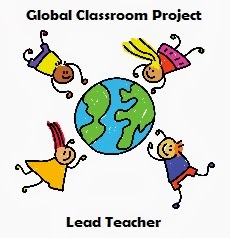
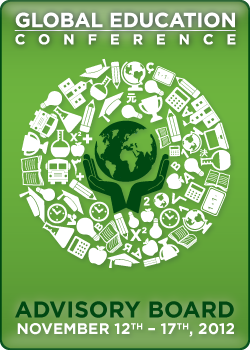
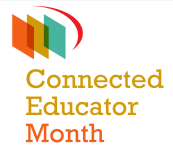
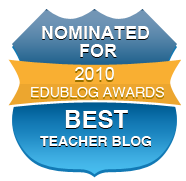




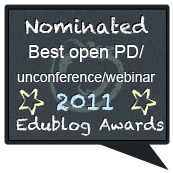
 Twitter/murcha
Twitter/murcha Del.icio.us/murcho
Del.icio.us/murcho GMail/Anne M
GMail/Anne M Blog/Anne M
Blog/Anne M